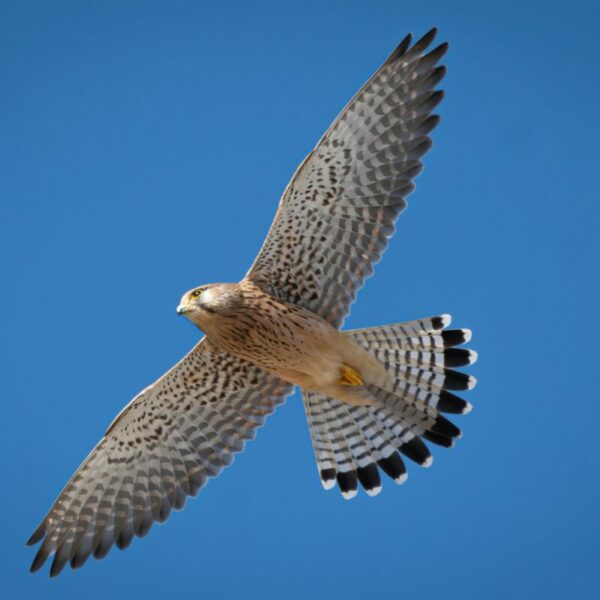All around the Mediterranean, local groups are trying to repair what concrete, fire, or nets have destroyed. Wetlands recreated for migratory birds, beehives revived after fires, raptors and turtles treated and then released: in the face of the accelerated erosion of life, solutions are emerging. Modest, concrete, reproducible. And sometimes even contagious. These projects tell a story of patient and local reconquest, in the face of an accelerating collapse.
Preserving biodiversity by transforming former fish ponds into wetlands: by Caroline Haïat - Israel
Beyond the fires, saving the bees: by Andri Kounnou - Cyprus
When civil society nurtures wildlife: by Lilia Blaise - Tunisia
They often work in silence. In forests, by the water, or in laboratories, these women and men seek to reverse the tide. In the face of soil artificialization, repeated fires, species trafficking, and biodiversity collapse, they experiment, repair, and invent concrete solutions. And it works.
Recreated marshes for migratory birds
In Israel, 95% of wetlands disappeared during the 20th century. For millions of birds that cross this strip of land between Africa and Europe each year, it is a disaster. Since 2021, the Society for the Protection of Nature in Israel has been trying to bring back water and life to former dried fish ponds.
The project, called Start-Up Nature, transforms fish ponds into refuges for migratory birds. Three kibbutzim are already participating in the operation: Kfar Ruppin, Ma’agan Michael, Dan. In Kfar Ruppin, 200 species of birds have been recorded since the beginning of the conversion.
The goal is ambitious: to restore 30% of the country’s former wetlands by 2050. To achieve this, the lands are leased, the ponds redesigned, and then gradually filled to create habitats of varying depths. Each sanctuary comes with trails, observation points, visitor centers, and attracts up to 150,000 people per year.
The project is supported by the Israeli Parks Authority, with ongoing mapping of priority areas. And it is starting to be exported. Cyprus, Jordan, and other dry or overcrowded countries are interested. “This model is replicable wherever birds lack water,” says Jay Shofet from the SPNI.
In Cyprus, the bees survived the flames
In 2021, a deadly fire swept through the mountains of Limassol. Four dead, evacuated villages, 5,500 hectares went up in smoke. And many beehives. Three out of four hives destroyed, millions of bees lost.
A year later, the “Melissa Vie” center was created in Odous, with the help of the Bank of Cyprus and Rotary clubs. The goal: to rebuild the local beekeeping sector. Nine villages are involved. Thirty-eight small beekeeping businesses now rely on this center to train their teams, analyze their productions, and breed their queens.
“We want to revive biodiversity, not just honey production,” says Menelaos Philippou, a beekeeper and former village president. But challenges persist: drought, diseases, unstable weather. The yield remains fragile.
Around the center, other dynamics have emerged: school visits, awareness campaigns, corporate gifts made from honey, communication on social networks. The bee has become a symbol of reconstruction, of the link between humans and territory.
In Tunisia, raptors are becoming wild again
Tunisia is a strategic migratory zone for birds. But it is also a hub for animal trafficking. Falcons sold in the souks, raptors mutilated for photos, tigers imported illegally. In 2024, a white tiger escaped in the streets of Sfax and was shot.
In this context, the Tunisian Association for Wildlife (ATVS) serves as a bulwark. It rescues animals confiscated by authorities, organizes care, and prepares for releases. In Sidi Thabet, a rehabilitation center welcomes raptors, foxes, wolves, and fennecs, with the help of volunteer veterinarians.
The release process is long. Wings need to be regenerated, hunting skills relearned, dependency unlearned. In two years, four golden eagles have been released, tagged, and monitored. Operations coordinated with other NGOs, such as L’Ami des oiseaux, and forestry services.
The most complex cases require international follow-up. A vulture from Niger is soon to be transferred via a CITES agreement. A first. “We feel that mindsets are changing,” says Habib Rekik from the ATVS. “But as long as we sell snakes in the middle of the market in Tunis, we have work to do.”
Marine turtles, technology, and education
Tunisian wildlife does not stop at raptors. Turtles are also regaining their footing. On the Kuriat Islands, near Monastir, nesting has resumed thanks to the work of the association Notre Grand Bleu. Sixteen nests have been recorded this year. Sentinels watch over, raise awareness, and assist with hatching.
Since late 2024, a hospital barge has been floating off the coast of Kerkennah. Here, injured turtles are treated before being released directly into the sea. An unprecedented project, supported by the United Nations. Students come to learn care and identification techniques.
Others are inspired to go further. Bassem Bousselmi, a computer engineer, launched Fakrouna, a tracking system for turtles using smart tags. Temperature, depth, location: everything is recorded. The tool, cheaper than imported trackers, allows local access to fine data. “Our goal is to understand how they live. And to help those who protect them to act faster.” AI thus enters the loop. For science, but also for education and conservation.
Modest gestures for lasting effects
What connects these initiatives is less the power of resources than the consistency of actions. They do not erase global imbalances, but they repair, here and now. Their strength lies in their modesty, their grounding, their persistence. And in this simple idea: that it is not too late to do better, nor too early to start again.

Photo credit: The common kestrel is not a threatened species, but it is a victim of poaching, captivity for tourism, and habitat destruction © Photo by Mahmoud Yahyaoui – Pexels
